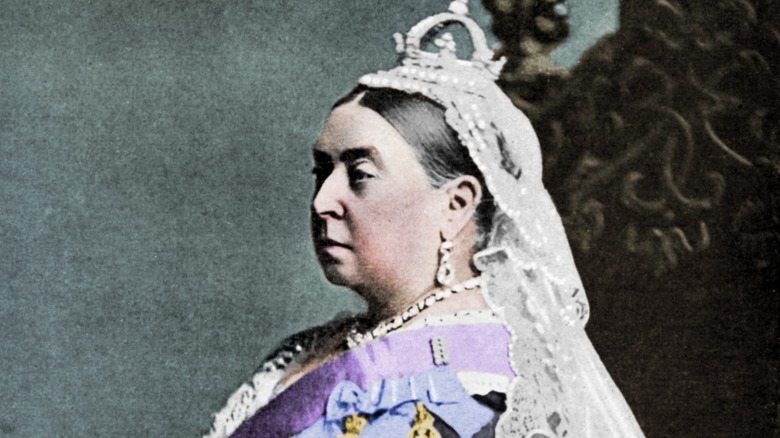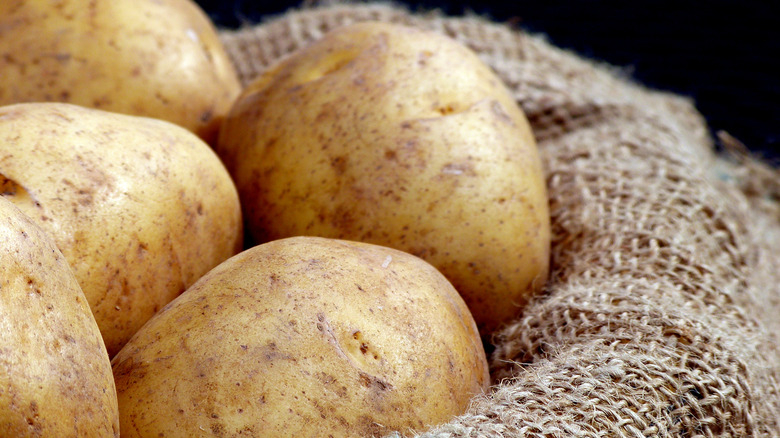Queen Victoria's Favorite Food Was One She Ate Nearly Every Day
As a child, Queen Victoria was restricted to a diet that included bread with milk and plain roast mutton. When she was crowned queen in 1837, she made up for lost time and ate whatever she pleased, indulging in large meals every day. Victoria had a variable menu, oftentimes with multiple meat and fish courses served at dinner, but she seems to have had a special fondness for potatoes. As recorded in the Royal Archives, her hearty breakfasts included mutton chops and mashed potatoes or sausages with potatoes. In 1897's "The Private Life of the Queen by a Member of the Royal Household," it was revealed that Victoria "confessed to a great weakness for potatoes," which were prepared for her in a multitude of ways.
One of her favorite potato dishes that appeared on an 1897 menu was kartoffelsuppe, a creamy potato soup popular in Germany that's similar to French potato leek soup. There's a frequently cited story about Queen Victoria's potato passion that comes from Her Royal Highness herself. Victoria kept a journal for 69 years, and in an 1861 entry, she wrote about a tour of the Scottish Highlands with her husband Prince Albert. They stopped at an inn in Dalwhinnie, and as she complained in her diary, she was horrified to discover that their supper was only "two miserable starved Highland chickens without any potatoes!"
Why Queen Victoria was called The Famine Queen
Potatoes were brought to England in the late 16th century, and at the time, only wealthy people ate the "new vegetable." But by Victoria's reign, potatoes had become a cheap and nutritious staple of Britain's working-class diet. Street vendors sold hot baked potatoes everywhere, and around 1863, the classic fish and chips (fried potatoes) became popular.
Victoria's love for potatoes was well-known, and politically, it cost her. In the 19th century, Ireland was under British rule, but Victoria showed no enthusiasm for her Irish subjects and visited Ireland only four times. In 1845, a potato blight wiped out Ireland's crop, which the queen blithely ignored. Over the next seven years, known as The Irish Potato Famine, approximately 1 million of Victoria's Irish subjects died of starvation. She showed no compassion and did little to help them financially.
Frail and wheel-chair bound, Victoria made her final visit to Ireland in 1900 to encourage Irish enlistment in the Boer War. During her visit, Irish revolutionary Maud Gonne wrote an article titled "The Famine Queen," in which she blamed Victoria and her "criminal policy" that resulted in so many Irish people dying of hunger. British authorities banned the article, but to this day, the name and resentment towards The Famine Queen linger on.

